Esacpe to the country
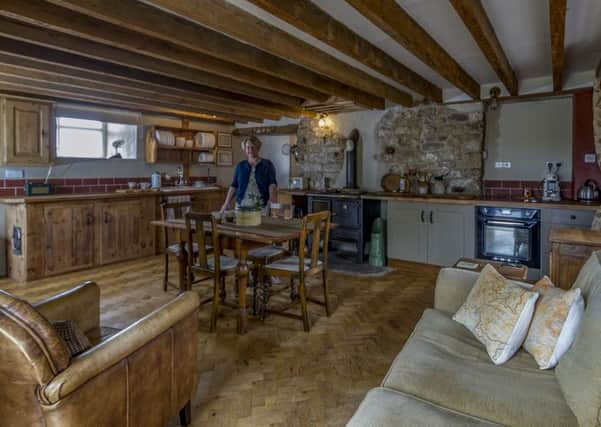

Tired of living on a busy main road in an over-crowded commuter town in Kent, Sara Jane Murray and her husband Paddy dreamed of moving to the country.
They took an “anywhere but here” approach to their hunt, with fresh air and beautiful views their main criteria.
Advertisement
Hide AdAdvertisement
Hide AdTheir nationwide search led them high on a moor and down two long and bumpy farm tracks to a remote Dales barn, near Clapham.
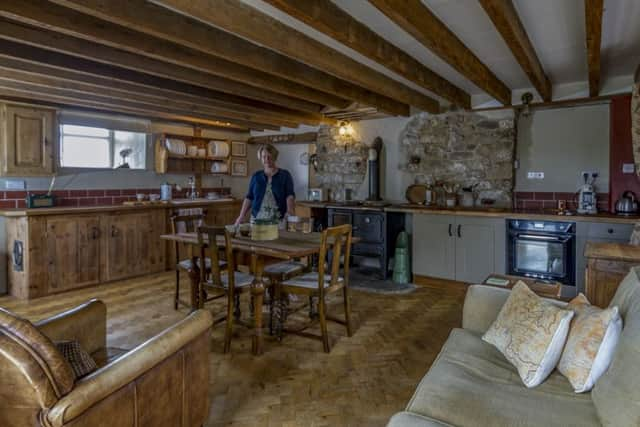

“Paddy found it online and sent me a text saying ‘I’ve found our house’. That was on Thursday, we drove up on Friday, saw it Saturday and put in the offer on Monday.
“It was a case of one extreme to the other and we weren’t really looking for something so remote but as soon as we saw it we knew it was the one,” says Sara.
The lifestyle change was dramatic. The couple sold their two-up, two-down terraced house, quit their day jobs and headed north.
Advertisement
Hide AdAdvertisement
Hide Ad“Everyone thought we were mad. We did a list of reasons why we should and shouldn’t buy it. There were 49 reasons not to and one in favour, which was “it’s lovely”. So we bought it and we have absolutely no regrets,” says Sara, who now volunteers in her local community shop in Clapham and runs a specialist vintage business.
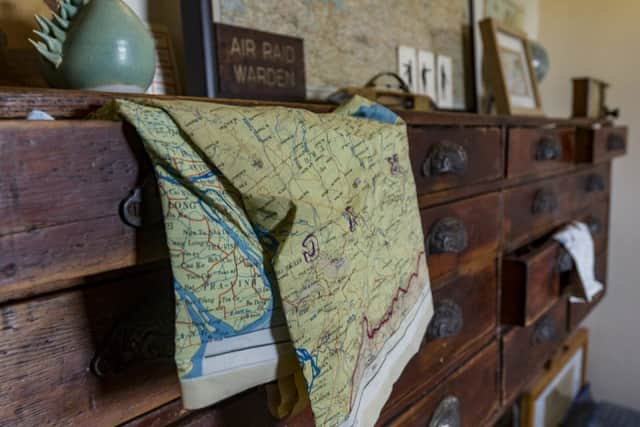

Home Front Vintage was born when she bought a silk escape and evasion map from a vintage fair. Fascinated, she researched their history and discovered that they were used during the Second World War and the Cold War. They were given to pilots and Special Forces so if they were captured or found themselves behind enemy lines, they had a better chance of finding their way back to safety. The maps were hidden in jacket lapels and in the heels of boots. Unlike paper, which rustles, the silk went undetected and it didn’t disintegrate when wet.
“I fell in love with this amazing example of British eccentricity and ingenuity and when I told an ex-Army friend he knew where I could source more maps. Then I had to think of something to do with them so I could retell their story,” says Sara, who repurposes damaged maps, rather than those still intact.
She taught herself to sew so she could make them into cushions, lampshades, pictures, notebooks, jewellery, cards and ties. They all come with an explanation about their history.
Advertisement
Hide AdAdvertisement
Hide AdShe keeps one of every escape and evasion map she has found and checks with the RAF Museum if she finds one that she thinks is rare and maybe useful to them.
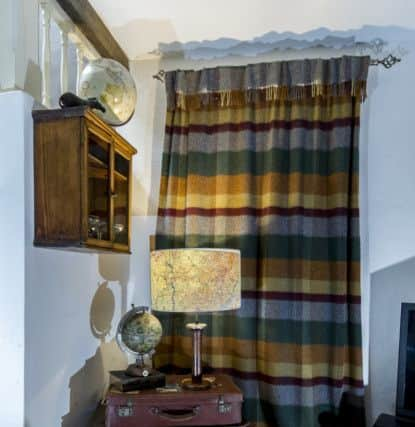

“There were thousands made of Europe, Russia and the Middle and Far East. They were usually concealed in the uniform but the Derwent Cumberland Pencil Company also made special hollowed-out pencils so a map could be hidden inside.
“The prisoner of war camps allowed charities to send certain items in, so the British government set up a fake charity and sent Monopoly games in. The board was cardboard with a map hidden in the cloth overlay and within the piles of Monopoly money would be German and French bank notes for use by those planning an escape.”
Now that her work is becoming well-known, people send her the maps along with the stories behind them.
Advertisement
Hide AdAdvertisement
Hide Ad“A 94-year-old man who flew a Lancaster sent me his life story listing all his war escapades, which was fascinating,” says Sara, who used to work for the motor neurone disease association.
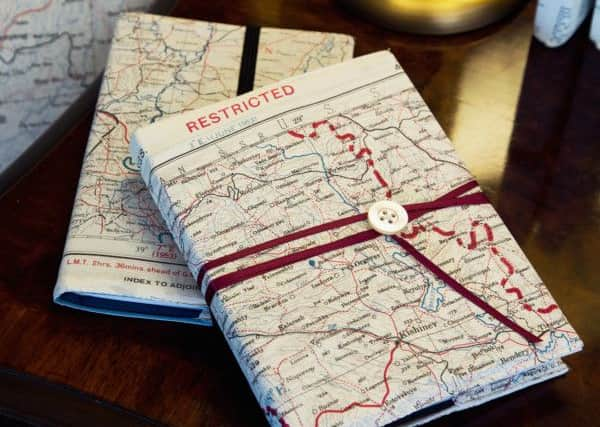

There are examples of her work all round the house, which was in need of refurbishment when they bought it
It had been empty for over a year and was cold, mouldy and damp thanks to a leaky roof. Drying out the two feet thick walls took months as there is no central heating, just an Esse stove.
Fortunately, Paddy, a former paramedic turned lorry driver, is good at DIY, which has come in handy, especially when mice chewed through the electrics and he had to pull down part of the ceiling and do some rewiring.
Advertisement
Hide AdAdvertisement
Hide AdHe is also planning to install a biomass boiler and solar hot water panels.
Meanwhile, the couple have redecorated and furnished the barn with vintage buys and investment purchases like the John Lewis sofa and Avoca blankets that Sara made into curtains.
There’s also work by fellow makers and artists, including Andy Poplar, Pottery West, Hester Cox, David Mayne and Samantha Bryan.
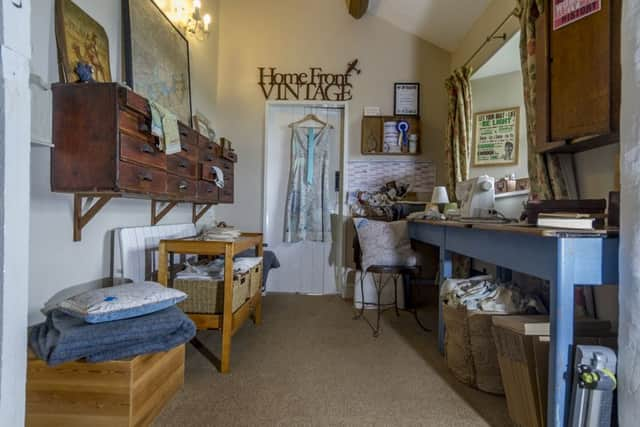

Outside, they have made a courtyard garden with fruit and veg patches and have embraced their ownership of a six acre woodland that came with the property.
Advertisement
Hide AdAdvertisement
Hide AdPaddy learned how to coppice and has invested in a chainsaw so the wood can be used for the stove.
It saves buying it and they’ll never run out, which is just as well as popping out to the shop is a major expedition.
“A lot of people booked to view this property when it was for sale because they liked the idea of it but some of them didn’t even make it down the track,” says Sara. “It’s not always easy being this far out but we are part of a lovely community in Clapham and the benefits of living here are immense. We see barn owls and deer and hares boxing and it’s so quiet. It’s a world away from that main road in Kent.”
Sara Jane Murray’s online shop is at homefrontvintage.co.uk. You can see her work in Hawksby’s on Main Street. Haworth.
*The man who invented the maps
Advertisement
Hide AdAdvertisement
Hide AdSara Jane Murray writes: “Clayton Hutton, an eccentric MI9 British army officer, was the genius behind many WW2 escape and evasion aids, which are still in use today.
“Hutton came up with the idea of silk maps after he persuaded the British Museum to collect in the region of fifty true wartime escape stories from various second hand bookshops in Bloomsbury. He then had them delivered to the sixth form at Rugby School and asked the pupils to read the books and summarise the key elements. The one item that constantly stood out was an escape map.
“Hutton approached Bartholomew’s, a world-famous map making company, and persuaded them to waive their copyright on maps for the war effort. Hutton had the maps printed onto pure silk; the ideal material for an escape map, as silk is quiet, rustle free and easy to hide or sew inside clothing.”